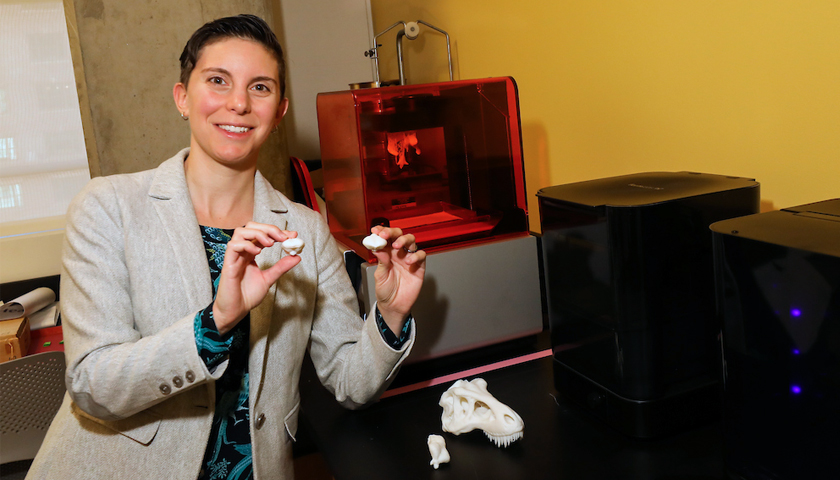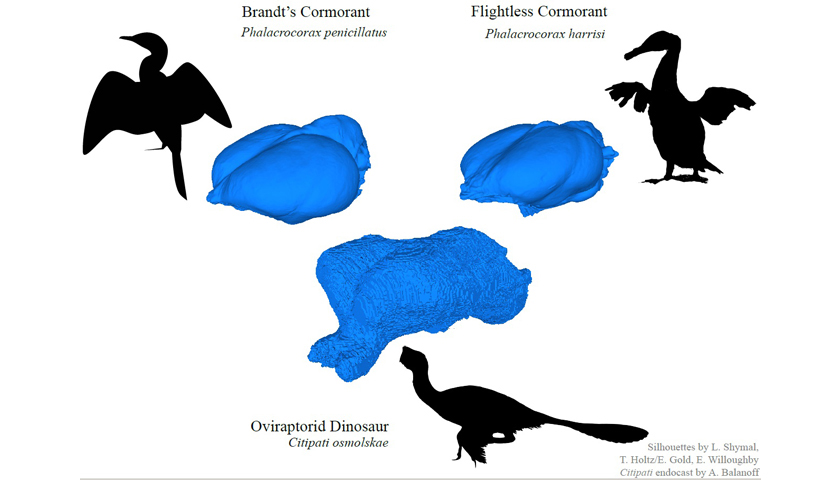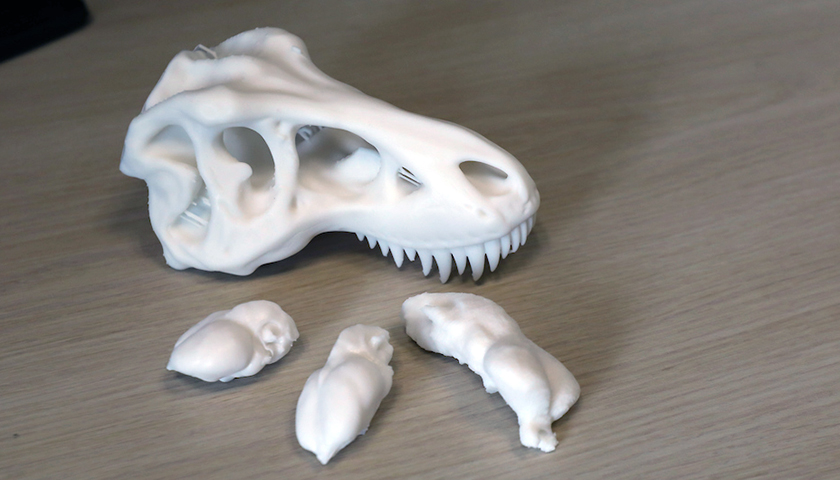By comparing the brain shapes of modern-day birds to those of dinosaurs that were most likely on the verge of becoming airborne, Suffolk University Biology Professor Eugenia Gold discovered that brain shape is likely affected by the acquisition of a behavior, but not by the loss of behavior.
A paper resulting from her research, “Flightless Birds Are Not Neuroanatomical Analogs of Non-Avian Dinosaurs,” coauthored with Professor Akinobu Watanabe of the New York Institute of Technology College of Osteopathic Medicine, has been published in BMC Evolutionary Biology.
Paleontologists, given their access to excellent fossil specimens, have a good idea of how the bodies of theropod dinosaurs changed through their evolution, according to Gold. But brain evolution along the dinosaur-bird evolutionary transition is still being worked out.

Gold and Watanabe tested how the brains of nonavian theropod dinosaurs and modern birds responded to the evolution of powered flight by looking at closely related pairs of modern birds where one species is flightless and the other is volant, or able to fly.
“We used the loss of flight as a reverse analogue to the initial acquisition of flight,” said Gold, who sorts through an assortment of white 3D printed brain models kept in her Suffolk University office as she explains her work.
The scientists CT scanned the skulls of around 50 specimens of modern volant and flightless birds and acquired the CT scans for 26 others. They filled in the braincases digitally to create 3D representations of the brains called endocasts. Then, using geometric morphometrics, a technique that involves putting 3-D coordinate points to mathematically describe shape, and a series of statistical methods, they analyzed how the shape of the endocasts changed from dinosaurs to birds, as well as from flying birds to related flightless birds.

“So far, most studies on brain evolution have analyzed size, but size is only one aspect of how the brain changed throughout evolutionary time. In this study, we used a high-density geometric morphometric approach to capture the full breadth of shape differences and changes that occurred in dinosaurs and modern birds,” said Watanabe.
Moreover, based on their sampling, Gold and Watanabe entered into the controversy over whether or not Archaeopteryx could fly. They inferred that the feathered dinosaur, a transitional specimen between dinosaurs and modern birds, was “terrestrial based on its endocranial morphology.”
“Maybe it could flap its wings to run up vertical surfaces,” said Gold, based on the statistical analysis.
Findings
- In modern birds, the shape of the brain is very similar in closely related species. The loss of flight does not change the shape of the brain in large ways; the shape is more controlled by evolutionary history.
- The principal components analysis of the entire sample (73 modern specimens, five non-avian theropods, and Archaeopteryx) shows that modern birds occupy their own morphospace, away from the non-avian theropods and Archaeopteryx, indicating the even though the loss of flight doesn't appreciably change brain shape, the initial acquisition of flight may have had an effect on brain shape.
- Cross-validation analyses indicate that according to its brain shape Archaeopteryxwas terrestrial, not volant or flightless, which adds an interesting perspective on the debate about its ability to fly.
- The sample does not indicate a return to an ancestral brain shape when modern birds become flightless, therefore modern flightless birds are not reverse neuroanatomical analogues of non-avian dinosaurs.

This work was funded by the NSF, the Richard Gilder Graduate School, and the American Museum of Natural History.
About Eugenia Gold
Professor Eugenia Gold teaches in the Biology Department of Suffolk University in Boston. She holds a PhD in Comparative Biology from the Richard Gilder Graduate School of the American Museum of Natural History. Her field work has taken her to the Gobi Desert, Mongolia, Hansksville, Utah, and the Chinle Formation, Arizona. Gold has been consulted by news reporters from the New York Times, National Geographic and NPR, among others, and her research has been widely published. She has been interested in dinosaurs for as long as she can remember.
Contact
Greg Gatlin
Office of Public Affairs
617-573-8428



